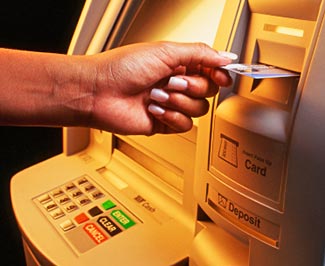 There are about 87,000 ATMs in the country, all owned by banks. According to market players, 10,000-15,000 of these are outsourced to companies for maintenance.
There are about 87,000 ATMs in the country, all owned by banks. According to market players, 10,000-15,000 of these are outsourced to companies for maintenance.
This model is known as the brown-label ATM model.
However, the proposed model, the white-label ATM model would allow non-banking companies to set up and run their own ATMs, under a pact with a sponsor bank and a network provider.
Sunil Nair, managing director, Euronet Services India, said, "The new set-up could be in the form of retail deployment or lobby-based ATMs we are used to.
"But it would not carry the bank's name, like in the current model. That's the main difference."
WLA operators can also earn extra revenue through advertisements and value-added services, RBI said in the circular.
The model would give operators autonomy on deciding locations and creating their own brand.
The central bank has sought on the issue by March 6.
Prospective WLA operators said there were a number of issues that needed clarity.
Rajiv Kaul, executive vice-chairman and chief executive, CMS Info Systems, said, "What will be the responsibilities of the sponsor bank, how would customer disputes be resolved and for how long would the interchange rate remain fixed are some of the issues."
RBI's draft circular said WLA operators would have to enter into a tripartite agreement with a sponsor bank and a network provider.
While
Nair said if these ATMs were also used for cash dispensation, there wouldn't be much of a difference between this and the brown-label model.
He added until clarity on the matter came about, players would be cautious in setting up white-label ATMs.
RBI has said it would release the final norms soon after receiving feedback on the matter.
What's in store for customers?
Customers of all banks would be able to avail of WLA services through debit cards. Though the facility is currently available, it comes with a caveat.
Only five interbank transactions are allowed without charges.
A fee of Rs 18 is charged if an ATM of a different bank is accessed more than five times a month.
Under the WLA set-up, customers would be charged for all transactions, according to the draft norms. Loney Antony, managing director, Prism Payments, said charges under the new model may differ from one operator to another.
"The operator may choose to subsidise the service, if it is earning fees from other sources like banks and advertisements."
According to the draft norms, before a customer carries out a transaction, all charges would have to be displayed on the screen of an ATM.
Click Here For Rediff Realtime News












 © 2025 Rediff.com -
© 2025 Rediff.com -